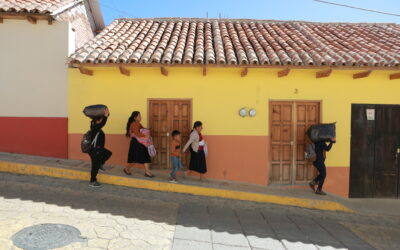Bill Abrams: Trickle Up works because women invest in their children.
I’m Bill Abrams, and I’m the president of Trickle Up and we’re here this week in Guatemala to have a look at our work here helping people who are at the very very deepest levels of poverty.
The single most important fact to know about Trickle Up is the population we serve. We serve the ultra poor, the poorest of the poor, the invisible poor, women, these aren’t people living on a dollar a day they’re living on 50 or 75 cents a day. From day to day they don’t know if they’re gonna have enough food to eat, if their children get sick they have nowhere to go, people who have very little income, very few assets have almost no chances in life, no chance at education, very often no chance at even participating in the economy their village or the community – Very often because they’re women and because they’re poor. They’re excluded from the opportunities of their society, of their communities, their villages. People who have disabilities are almost always excluded from opportunities.
The nature of poverty is that it’s intergenerational. The people we work with, their parent’s lives their grandparent’s lives are all the same. So poverty passes on from generation to generation it’s a terrible legacy, and we can help change those whole dynamics.
The most important person in the relationship with Trickle Up is the field staff, the case worker who’s working for our partner who’s visiting women on a regular basis, who’s providing training, who’s coming by to say how are you doing, what challenges are you facing, how can we brainstorm solutions?
Here in Guatemala we’re meeting people who have only been in the Trickle Up program for about 6 months, so they’re only about a third of the way through it. And I’m already seeing that they have business going, that they’re active in their savings groups, and they just have a smile on their face and a confidence about their countenance that they didn’t have when we met them 6 months earlier.
The most obvious things that Trickle Up helps people get is income, savings, skills, but there’s another piece that’s less obvious but equally important: it’s dignity. So imagine if you’ve lived a life of poverty, a life of marginalization, and a life of victimization, it’s hard to feel confident it’s hard to feel dignified. So we’re here to help change that, and when you see the kind of change that we help generate one woman at a time, you come away saying “what can I do to help even more people in the future? How can I raise more money? How do I spread the word? I can’t stop doing this because I see the need first hand and I see the solution.”


